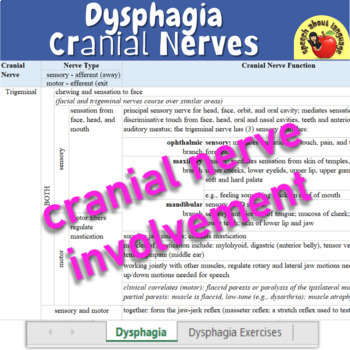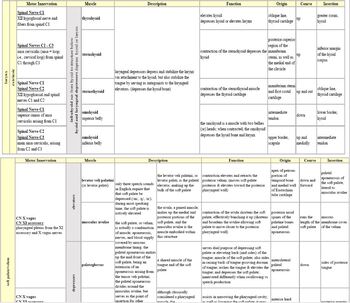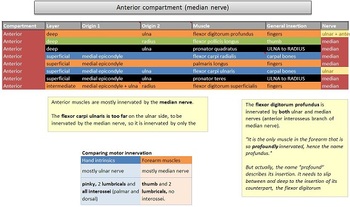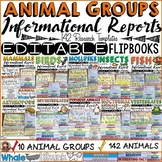3 results
Anatomy study guides for Microsoft Excel

Phases of Swallow: Normal/Dysphagia & Exercises Study Guide
I took my notes from dysphagia about the phases of swallow and put them into this Excel chart to study for midterms and finals. I wanted to see the normal function side-by-side with disordered swallow as well as the muscles/cranial nerves involved, all in one place. You can continue to edit the Excel file with your own notes. Happy studying!Notes include the Stages of Swallow: Oral Prep/Oral, Pharyngeal, EsophagealAnatomy & PhysiologyNormal Swallow FunctionDysphagia/Disordered Swallow3-page
Subjects:
Grades:
Higher Education
Types:

Cranial Nerve Innervation (Clinical Correlates)
Working knowledge of the cranial nerves is vital to the speech-language pathologist. Although not all cranial nerves are involved with speech or hearing, knowledge of cranial nerves is of great assistance in assessment (Seikel, King, & Drumright, 2010). SLP undergrad and grad students must memorize CN innervation, so I created a study guide to help. This document organizes the cranial nerves by the muscles innervated, function, origin, course, and insertion, and provides a description of eac
Subjects:
Grades:
Higher Education
Types:

Muscles of the forearm study and discussion tool - Preview
This interactive Microsoft Excel sheet is a great tool to use in the classroom with anatomy students. It helps them make sense of how the forearm muscles are organized by going through patterns step by step and drawing out important facts that help them understand the reasons behind the layout.
For example, all but two of the anterior compartment muscles (which tend to be mostly flexors of the wrist and fingers) are innervated by the median nerve. The flexor carpi ulnaris is so far to the ulnar
Grades:
11th - 12th, Higher Education
Types:
Showing 1-3 of 3 results





